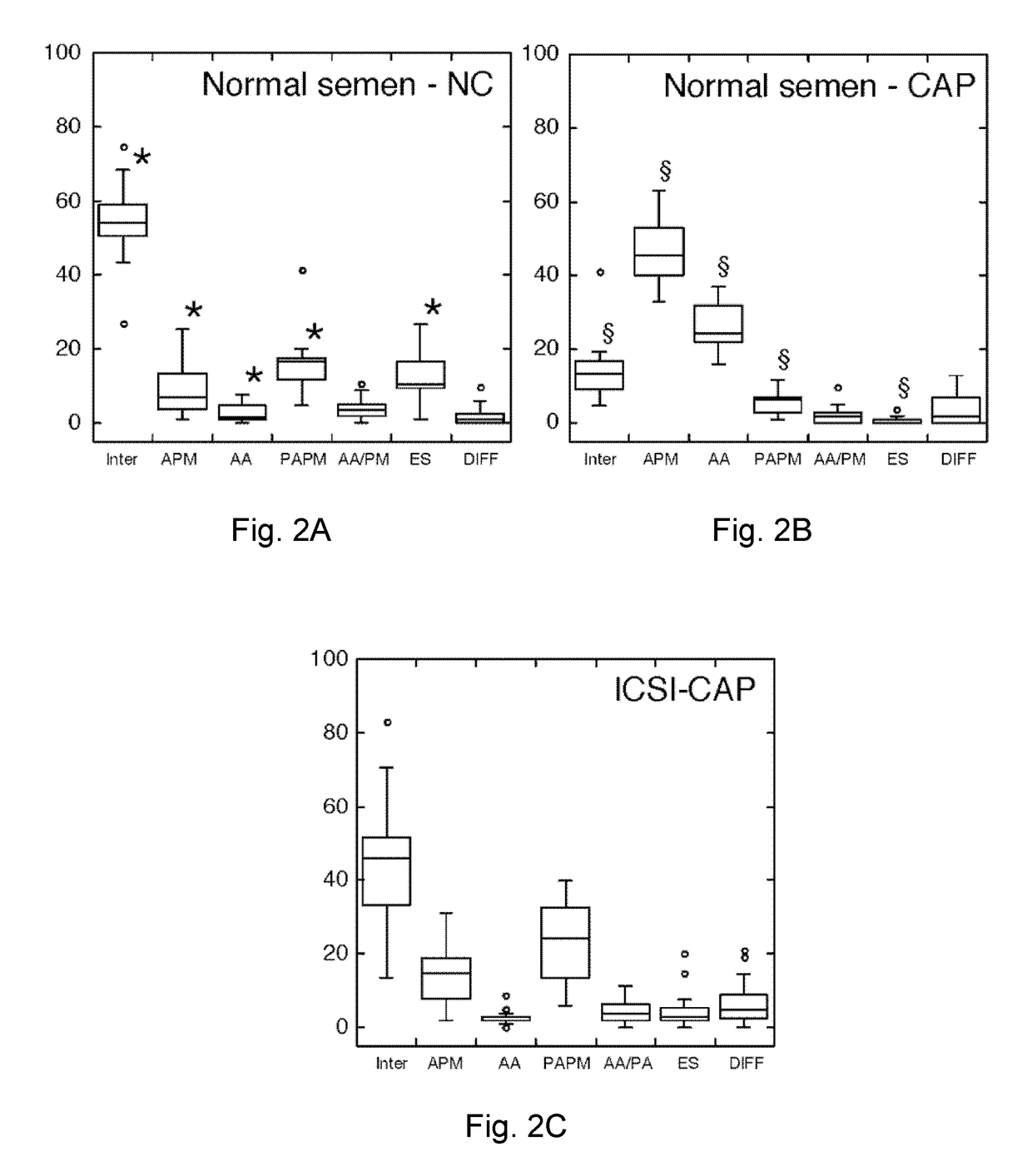Identifying status of male fertility by determining sperm capacitation
a technology of sperm capacitation and status determination, applied in the field of male fertility, can solve the problem that sperm is not immediately able to fertilize an egg, and achieve the effect of preventing sperm from wasting energy and reducing labor intensity
- Summary
- Abstract
- Description
- Claims
- Application Information
AI Technical Summary
Benefits of technology
Problems solved by technology
Method used
Image
Examples
example 1
[0081]This example provides demonstration of GM1 distribution patterns obtained with human sperm. Ejaculated sperm were collected from male donors, and allowed to liquefy for 20 mins at 37° C., and then volume, initial count, motility and morphology assessments were performed. 1 ml of the semen sample was layered on top of 1 ml of a density gradient (90% Enhance-S; Vitrolife, San Diego, Calif., USA) in a 15 ml conical tube. The tube was centrifuged at 300×g for 10 minutes. The bottom 1 ml fraction was transferred to a new 15 ml tube and then resuspended in 4 ml of mHTF. This was centrifuged at 600×g for 10 minutes. The supernatant was removed and the pellet of sperm was resuspended in 0.5 ml of mHTF. The washed sperm were then evaluated for concentration and motility. Equal volumes of sperm were then added to two tubes, such that the final volume of each tube was 300 μl, and the final concentration of sperm was 1,000,000 / ml. The first tube contained mHTF (non-capacitating condition)...
example 2
[0084]In this example, clinical histories of 34 patients were studied to perform a close analysis of their GM1 assay scores relative to history of ever achieving clinical evidence of pregnancy. A male patient was defined as “fertile” if a patient couple achieved some evidence of fertilization / clinical pregnancy (even if limited to biochemical evidence or a sac without heartbeat on ultrasound) within 3 or fewer cycles.
[0085]Analysis of the data for these 34 patients revealed that if one applied a cut-off of 40% (APM+AA) for the score of the capacitated samples at the 3 hour time point, then 7 / 8 who “passed” (having a score of 39.5% or greater), were found to have been designated “fertile” (87.5%). Of the 26 who “failed” (having a score of 39.4 or less), only 3 / 26 had evidence of clinical pregnancy (11.5%). (see Table 1 below)
[0086]If one reduces the cutoff, it would be predicted that more people who are clinically sub-fertile will get a passing score and the percentage that pass the ...
PUM
 Login to View More
Login to View More Abstract
Description
Claims
Application Information
 Login to View More
Login to View More - R&D
- Intellectual Property
- Life Sciences
- Materials
- Tech Scout
- Unparalleled Data Quality
- Higher Quality Content
- 60% Fewer Hallucinations
Browse by: Latest US Patents, China's latest patents, Technical Efficacy Thesaurus, Application Domain, Technology Topic, Popular Technical Reports.
© 2025 PatSnap. All rights reserved.Legal|Privacy policy|Modern Slavery Act Transparency Statement|Sitemap|About US| Contact US: help@patsnap.com



